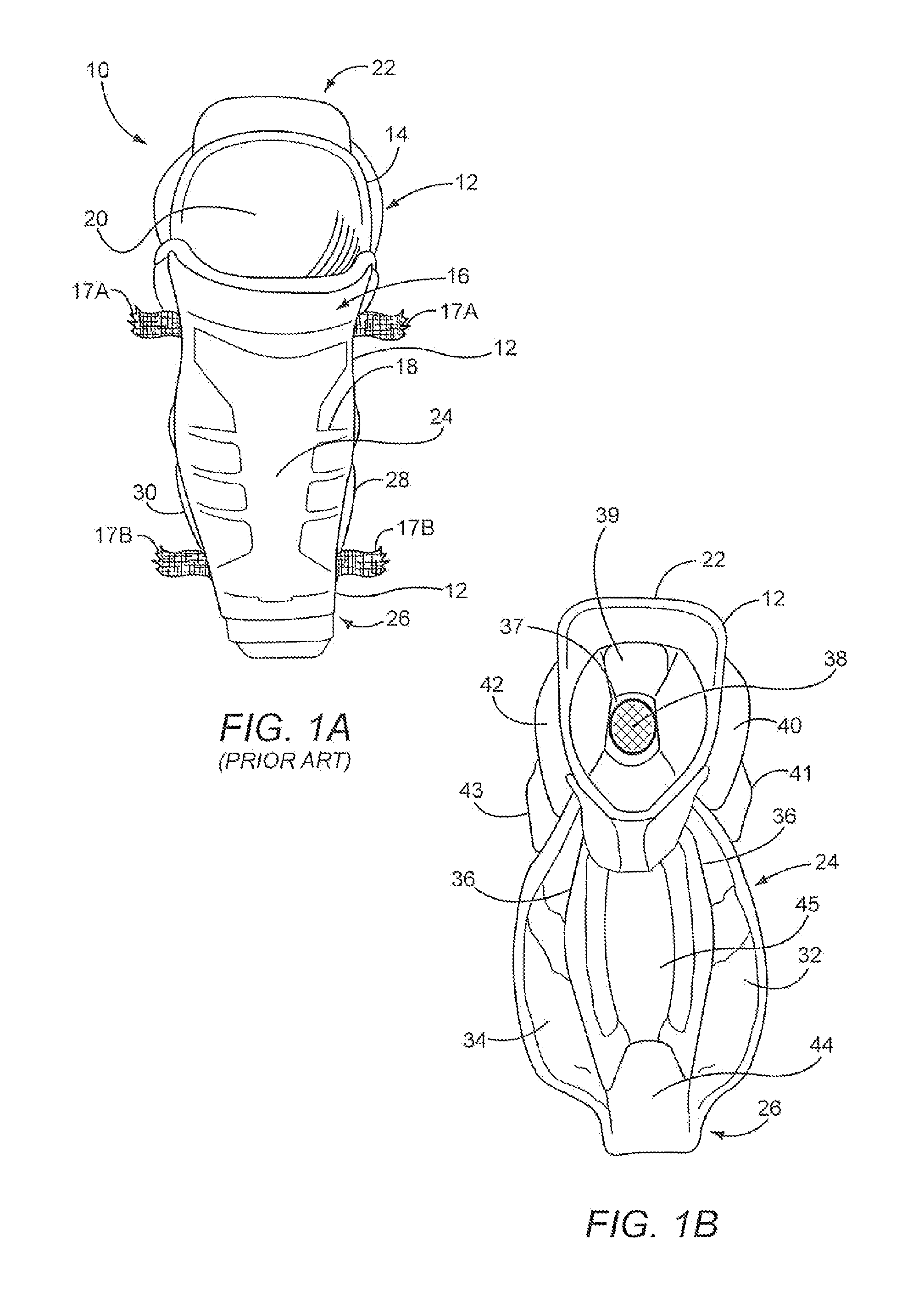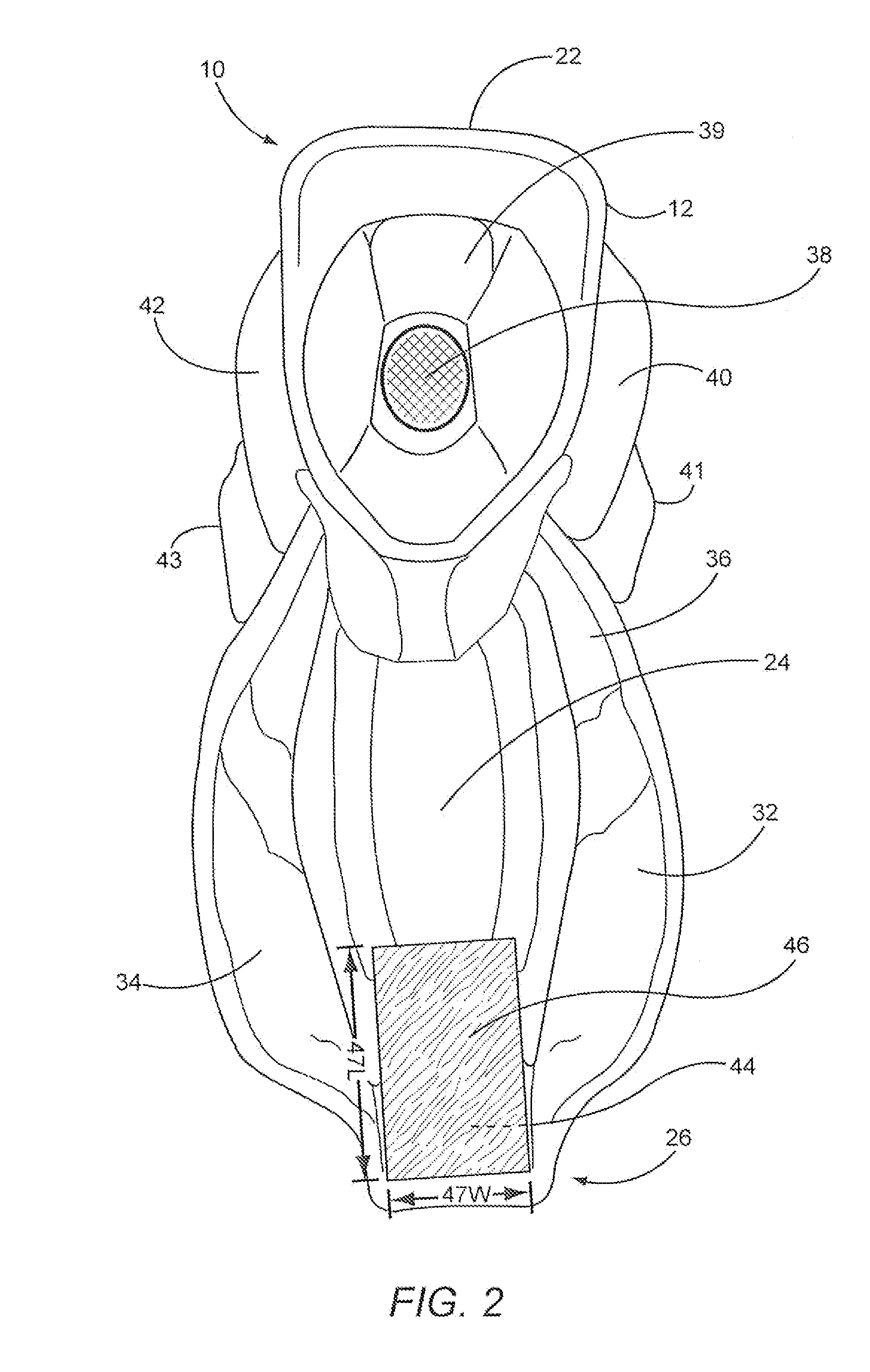Protective sports equipment and methods of making same
a technology for protecting athletic equipment and protective pads, applied in the field of protective equipment, can solve the problems of limited ability to absorb and displace energy, pain and injury, and the inability to prevent all injuries or pain of hard shell protective pads, and achieve the effects of reducing the force felt at the body part, absorbing and dissipating more of a force, and dissipating more of the force of impa
- Summary
- Abstract
- Description
- Claims
- Application Information
AI Technical Summary
Benefits of technology
Problems solved by technology
Method used
Image
Examples
Embodiment Construction
[0025]Reference will now be made in detail to the present preferred embodiment(s), an examples of which is / are illustrated in the accompanying drawings. Whenever possible, the same reference numerals will be used throughout the drawings to refer to the same or like parts.
[0026]Embodiments disclosed in the detailed description include protective pads for protecting a body part of a person, and methods of making the same. In one embodiment, the protective pad is a shin guard for protecting the shin from impacts during sporting activities. The protective pad comprises an outer shell and a padding layer connected to the outer shell. The protective pad further comprises at least one padding element located in an interior portion of a lower portion of the protective pad. The at least one padding element is configured to provide a space between the body part of the person and at least one of the outer shell and the padding layer.
[0027]Referring to FIG. 1A, a typical prior art shin guard is...
PUM
 Login to View More
Login to View More Abstract
Description
Claims
Application Information
 Login to View More
Login to View More - R&D
- Intellectual Property
- Life Sciences
- Materials
- Tech Scout
- Unparalleled Data Quality
- Higher Quality Content
- 60% Fewer Hallucinations
Browse by: Latest US Patents, China's latest patents, Technical Efficacy Thesaurus, Application Domain, Technology Topic, Popular Technical Reports.
© 2025 PatSnap. All rights reserved.Legal|Privacy policy|Modern Slavery Act Transparency Statement|Sitemap|About US| Contact US: help@patsnap.com



